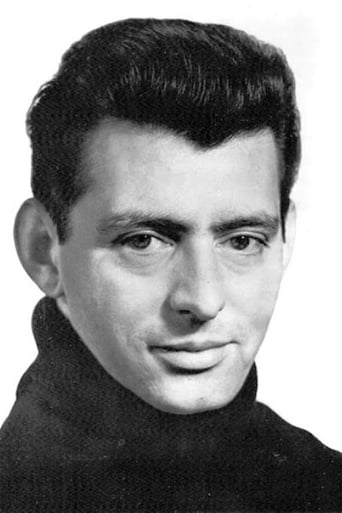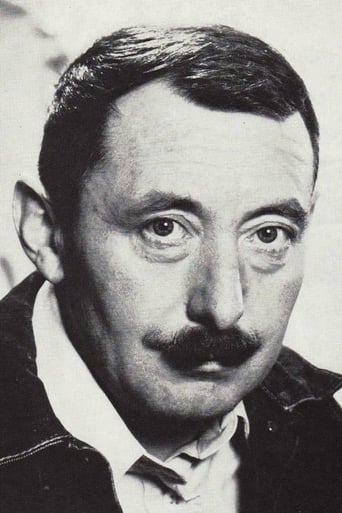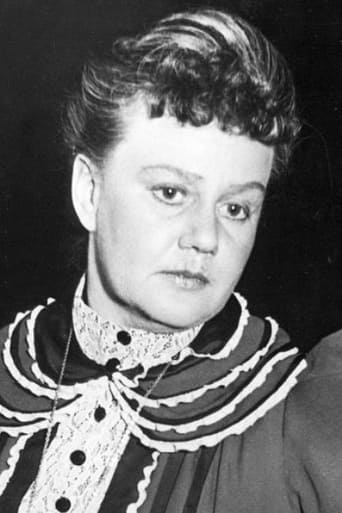Actuakers
One of my all time favorites.
Baseshment
I like movies that are aware of what they are selling... without [any] greater aspirations than to make people laugh and that's it.
Derry Herrera
Not sure how, but this is easily one of the best movies all summer. Multiple levels of funny, never takes itself seriously, super colorful, and creative.
Dana
An old-fashioned movie made with new-fashioned finesse.
Horst in Translation (filmreviews@web.de)
"Das Feuerzeug" or "The Tinder Box" is an East German 80-minute movie from 1959 so this one is already really old and it will soon have its 60th anniversary. The director is Siegfried Hartmann and he is also one of the writers who adapted the Hans Christian Andersen tale here for the screen. Hartmann is still alive today, almost 90, and he worked on several fairy tale-themed films in the GDR, even if he has not made any films anymore for almost 4 decades. The lead actor here is the late Rolf Ludwig and I must say I am neither familiar with him nor with any of the other cast members. But I thought he gave a good performance and occasionally reminded me of Errol Flynn's Robin Hood. In terms of the story, it was a good watch too. I quite enjoyed the film for the most part, which means I felt that the movie actually lost some quality towards the end when the protagonist had exposed the 3 maggots and decided to do the right thing and have a meal with the little boy. Everything afterward felt very generic and forgettable and this film, for me, could have ended around the 50-minute mark too. I liked the inclusion of the big dogs, even if I somehow felt they may have deserved a better elaboration in terms of who they were and their connection with the hero. Anyway, the ending was not bad enough to destroy the good quality from early on and that is why I give this one still a thumbs up and recommend the watch. I think Andersen may have liked this version.
Stefano Detoni
The movie is not bad, or maybe a little more than that. It hasn't the freshness and the richness in ideas and fantasy – and the absence of political contents - of the Czech fairy tales, but it flows pleasantly towards the end. It has bright colors and good actors. Its main problem is another. Like most East-German and Russian fairy tales movies, it can't refrain from political propaganda. In other cases it is overwhelming; here it's not too strong, though it can be seen without difficulty. The people from the higher classes are, without exception, lazy, false, two-faced, disdainful. The king and the queen are the most disagreeable. The "people", instead, is likable, honest, united, sympathetic.... So it is a very good thing that "the people" has demolished the upper classes and brought the "justice" of communism. This is the idea. The final revolt in the square of the village is a clear hint to the communist revolution. I have no doubt that political propaganda spoils the magic of a fairy tale. Apart from this, the movie is not a bad entertainment. Simple but good special effects.
coyets
I assume that films of well-known fairy tales cannot have spoilers, because almost anyone seeing the film will know the original story. Nevertheless, I have not described any of the story once the soldier reaches the town.The scene is set by the soldier, who is the hero of Hans Christian Andersen's tale, and is ably played by Rolf Ludwig, singing his woes to a melody which is typically for the 1950's rather happy-go-lucky. To the modern ear this introduction is quite likely to seem very tedious, and, indeed, the pace of the film is more attuned to a younger audience than those who would otherwise enjoy the narrative. After the song, the soldier is confronted by the old woman, adequately played by Maria Wendt. Unfortunately, the make-up artists overdid their job completely on this character, and, although the result may have been entertaining for young viewers at the time the film was made, the effect on today's young people is more likely to be off-putting, and to distract from the story more than to emphasise it. On the whole, this confrontation scene does a good job in arriving at the outcome without implying any blame on the soldier, which is an aspect I often thought about when I heard the story as a child. However, the dogs were not only lacking in ferocity, which at least has the advantage that younger children are able to appreciate the film, but they were not sufficiently differentiated in size. Indeed, all of the special effects in this film seem to be badly done, but some allowance must be made for the year, 1958, and the country, East Germany.When the film moves on into the town, the background becomes even less realistic, but to some extent this lends a fairy tale atmosphere to the various scenes. Unfortunately, the standard of acting also drops a notch or two. The town characters are all one dimensional caricatures, and this approach to fairy tale films is underlined by the choice of costumes. In addition, Barbara Mehlan makes an awful princess, and this fact destroys much of the enjoyment of the latter part of the film. It is not that her acting is any worse than that of the other characters in the part of the film which takes part in the town, but that she simply does not fit the role.'Das Feuerzeug', which, by the way, I saw in the original German, does a fair job of telling Hans Christian Andersen's story as a film, but it is let down badly in the details, which is a pity, because, although the East Germans never seemed to reach the heights of Polish, Soviet Union and above all Czechoslovakian children's films, there were many from this now defunct country which were much better than this one.
Arun Vajpey
I saw this film in India back in 1962 as a 7 year old boy. It was dubbed in English and called "The Tinder Box". I recall enjoying the film with its excellent entertainment and special effects (for the time). Such films always have a timeless quality about them and I hope that it will soon be released on DVD.





